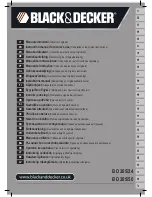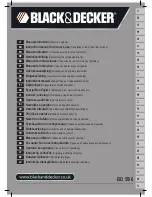
For example, to set up your 166xs for frequency-sensitive gating or frequency-weighted
compression, you must feed an equalizer’s input with the same signal fed to the 166xs INPUT,
and then connect the equalizer’s output to the 166xs SIDECHAIN INSERT jack (Figure 4).
Providing the signal to both the 166xs INPUT and the equalizer can be accomplished in several
different ways: (1) use an insert cable plugged into the SIDECHAIN INSERT jack. The SEND goes
to the input of the EQ. The RETURN goes to the output of the EQ; (2) use a Y-cable to feed the
audio source to both the 166xs INPUT and the equalizer input; (3) feed the signal to one of
the 166xs INPUT jacks and use the compressor channel’s parallel INPUT jack to drive the
equalizer (e.g., if the audio source feeds into Channel 1’s 1/4” INPUT jack, use Channel 1’s XLR
INPUT jack to feed the signal to the equalizer); (4) if the audio source can internally split its
output signal (e.g., some synthesizers can send the same signal from two outputs), plug a
cable into each output and feed one cable to the 166xs INPUT and the other to the equalizer.
3.2 Specific System Connections
The 166xs has balanced inputs and outputs, and can be used with any balanced or unbalanced
line-level device. Some common examples include: mixing consoles, musical instruments,
patch bays, and other signal processors.
Mixing Board
If you wish to compress a particular track of a multitrack recording or one channel of a live
performance, connect the 166xs INPUT to the audio source’s output jack while the 166xs
OUTPUT can be directly connected to a line input jack (balanced or not) or the 166xs INPUT
and OUTPUT can be wired to an Insert point. In the latter case, the signals will most likely be
unbalanced.
It is important to note that the amount of compression is directly related to the level of the
input signal. However, depending upon your system’s setup, it may not always be clear as to
what volume controls in your chain affect input level and which affect output level. If the
166xs is connected so that compression occurs before the mixer’s volume controls (e.g., the
166xs is connected directly between an audio source and the mixer input, or the 166xs is
connected to mixer inserts that are “pre-fader”), you can boost or cut the input level by
adjusting the source’s volume control (e.g., a synthesizer’s volume control) and boost the
track’s output level using the 166xs OUTPUT GAIN control or the mixer’s volume fader (the
latter here is great for track fade-outs). However, if the 166xs is connected to “post fader”
mixer inserts, adjusting the mixer’s volume fader changes the input level and the amount of
compression. If you would rather have this volume fader control output, we suggest that you
set up the compressor directly between the source and the mixer channel’s input. This way,
you can use the instrument’s volume control to define the input level and amount of
compression and the mixer’s volume fader to change only the overall volume of the track.
Musical Instruments (e.g., Electric Guitar, Bass, Keyboards, Electric-Acoustic
Instruments)
The output of an electric guitar is sometimes not “hot” enough to drive the 166xs INPUT.
When this is the case, switch the rear panel +4/-10 switch to the IN position which will boost
the low level signal by approximately 12dB. If this is still not enough boost then you should
Section 3
Making Connections
11
dbx 166xs














































